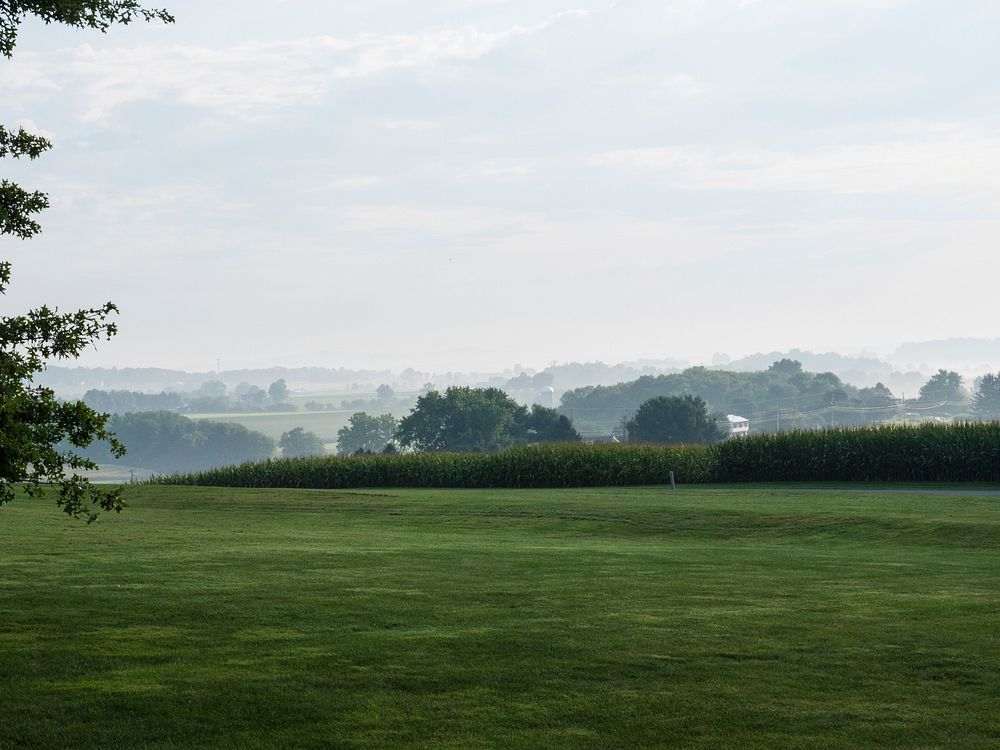
Winemaker Jan Waltz, owner of Waltz Vineyard worked with state and federal agencies to remove and keep the invasive spotted lanternflies (SLF) off his fields of grape vines, grain corn and groves free of these pests, on August 29, 2018, in Manheim, PA. The spotted lanternfly is a destructive insect that feeds on a wide range of fruit, ornamental, and hardwood trees, including grapes, apples, walnut, and oak; a serious threat to the United States' agriculture and natural resources.
The pest damages plants as it sucks sap from branches, stems, and tree trunks. The repeated feedings leave the tree bark with dark scars. Spotted lanternfly also excretes a sticky fluid, which promotes mold growth and further weakens plants and puts our agriculture and forests at risk. Native to Asia, the spotted lanternfly has no natural enemies in North America. it's free to multiply and ravage orchards, vineyards, and wooded areas. The invasive insect was first detected in the United States in Pennsylvania in 2014, and has now spread to several states, by people who accidentally move infested material or items containing egg masses.
Most states are at risk of the pest. USDA and our state and local partners are working hard to stop the spread of this invasive pest, but we need your help. Look for signs of spotted lanternfly.
Inspect trucks for egg masses before leaving parking lots or work sites. Scrape off any egg masses you find into rubbing alcohol or hand sanitizer. While parked, keep windows closed so hitchhiking nymphs and adults stay out. Make sure you also check other equipment being moved, like outdoor machinery, propane tanks, and shipping containers. If youâre a business owner, keep a close watch over your property. Park in areas away from the tree line. To capture nymphs and adults, you can wrap tree trunks with adhesive bands from May to August. You can also remove ailanthus trees, known as âThe Tree of Heaven.â These invasive weed trees are a favorite of spotted lanternflies. Most importantly, be vigilant to inspect both incoming and outgoing goods â and the containers and equipment that carry them â they could be carrying a hitching pest as well. In a quarantine area, you can get information on management controls at aphis.usda.gov/hungrypests/slf. If you do encounter spotted lanternfly eggs, nymphs, or adults outside of quarantined areas, report the sighting to your State Department of Agriculture. USDA Photo by Lance Cheung.
*Adult spotted lanternflies are approximately 1 inch long and one-half inch wide, and they have large and visually striking wings. Their forewings are light brown with black spots at the front and a speckled band at the rear. Their hind wings are scarlet with black spots at the front and white and black bars at the rear. Their abdomen is yellow with black bars. Nymphs in their early stages of development appear black with white spots and turn to a red phase before becoming adults. Egg masses are yellowish-brown in color, covered with a gray, waxy coating prior to hatching.
Find it, report it!
Contact your State Department of Agriculture or the Extension specialist near you to report signs of spotted lanternfly. If possible, take a picture or capture the insect in alcohol.
Stop the Spread
Everyone can play a role in stopping the spread of spotted lanternfly
Remove and Destroy
Crush nymph and adult spotted lanternflies. Scrape egg masses into hand sanitizer or rubbing alcohol.
For more information about the Spotted Lanternfly, please see www.aphis.usda.gov/hungrypests/slf
For more information about the Tree of Heaven, please see www.nps.gov/shen/learn/nature/tree-of-heaven.htm. Original public domain image from Flickr